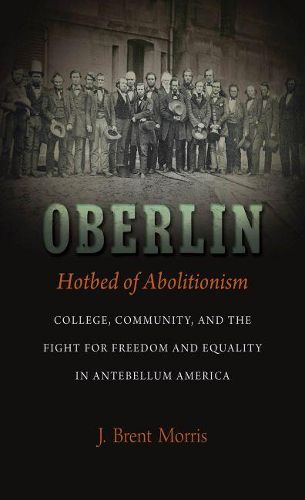Readings Newsletter
Become a Readings Member to make your shopping experience even easier.
Sign in or sign up for free!
You’re not far away from qualifying for FREE standard shipping within Australia
You’ve qualified for FREE standard shipping within Australia
The cart is loading…






By exploring the role of Oberlin-the college and the community-in fighting against slavery and for social equality, J. Brent Morris establishes this
hotbed of abolitionism
as the core of the antislavery movement in the West and as one of the most influential reform groups in antebellum America. As the first college to admit men and women of all races, and with a faculty and community comprised of outspoken abolitionists, Oberlin supported a cadre of activist missionaries devoted to emancipation, even if that was through unconventional methods or via an abandonment of strict ideological consistency. Their philosophy was a color-blind composite of various schools of antislavery thought aimed at supporting the best hope of success. Though historians have embraced Oberlin as a potent symbol of egalitarianism, radicalism, and religious zeal, Morris is the first to portray the complete history behind this iconic antislavery symbol.
In this book, Morris shifts the focus of generations of antislavery scholarship from the East and demonstrates that the West’s influence was largely responsible for a continuous infusion of radicalism that helped the movement stay true to its most progressive principles.
$9.00 standard shipping within Australia
FREE standard shipping within Australia for orders over $100.00
Express & International shipping calculated at checkout
By exploring the role of Oberlin-the college and the community-in fighting against slavery and for social equality, J. Brent Morris establishes this
hotbed of abolitionism
as the core of the antislavery movement in the West and as one of the most influential reform groups in antebellum America. As the first college to admit men and women of all races, and with a faculty and community comprised of outspoken abolitionists, Oberlin supported a cadre of activist missionaries devoted to emancipation, even if that was through unconventional methods or via an abandonment of strict ideological consistency. Their philosophy was a color-blind composite of various schools of antislavery thought aimed at supporting the best hope of success. Though historians have embraced Oberlin as a potent symbol of egalitarianism, radicalism, and religious zeal, Morris is the first to portray the complete history behind this iconic antislavery symbol.
In this book, Morris shifts the focus of generations of antislavery scholarship from the East and demonstrates that the West’s influence was largely responsible for a continuous infusion of radicalism that helped the movement stay true to its most progressive principles.